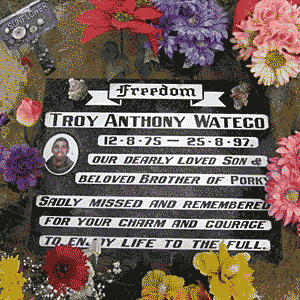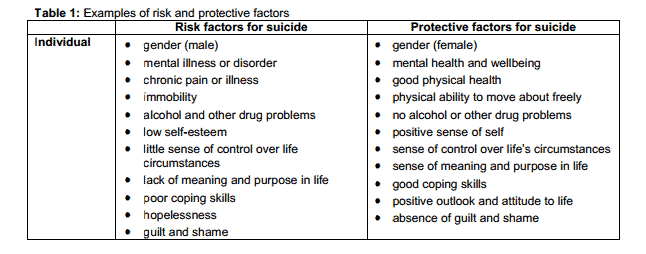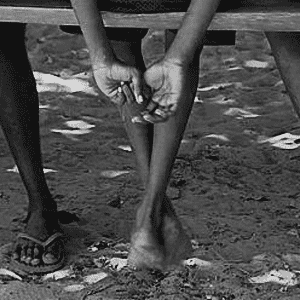Macklin said we will take child suicides seriously
The 'Gone Too Soon' report found that Aboriginal suicide programs, run by Government and their services, not by Aboriginal controlled services, are fragmented and uncoordinated and continue to fail to stem the tide of suicides.

Gerry Georgatos The Stringer 5 October 2013
Empowerment and pride are a formula that works positively to the betterment of the human condition, and to individual freedoms. Where empowerment and pride are lacking, communities and individuals languish in both dysfunction and malfunction, with the worst culminating in suicide. This explains in part the world’s highest suicide rates which are found among the world’s Aboriginal peoples. With the worst rate found among Aboriginal peoples in Australia – especially among its youth.
Australia’s Aboriginal youth is seven times more likely to kill itself than its non-Aboriginal counterparts. This national shame has been effectively criminally neglected by State and federal governments and there is no show or sign by them of funding Aboriginal controlled and Aboriginal serviced suicide prevention strategies.
There is no sign of governments wiping away the ridiculous third world impoverishment that 100,000 Aboriginal peoples endure in this first world nation – the world’s 12th largest economy, per capita the second wealthiest nation on the planet, with the world’s highest median wages.
There is no sign of governments dishing out equality, of improving the well-being of community with equity the equivalency to that of non-Aboriginal communities and townships, nor of respecting adequately the cultural integrity and rights of Aboriginal peoples particularly in the remote and regional areas – and therefore rather than cultural bridges there are only more cultural divides.
Determinism plays its hand as Aboriginal youth are born into grief, into the effects of the Stolen Generations, into cultural divides where cultural healing is still to be realised, into cultural loss, into racism and into the endless deaths – premature deaths.

Far too many Elders and community leaders have said to me that most Australians cannot or fail to realise how much grief Aboriginal children are exposed to. People dying from suicide – adults and youth – dying prematurely from illnesses – the passing of life happens either weekly, fortnightly but not any further apart than monthly in Aboriginal remote and regional communities.
Aboriginal suicides were not always the tragic common occurrence that it is now, it first surged in the 1980s but not to the tragic levels that we now have.
Suicide among Aboriginal peoples is nearly four times that of non-Aboriginal peoples, but Aboriginal children are killing themselves at more than seven times the rate of non-Aboriginal children – and as young as eight years of age, boys and girls.
The rise in Aboriginal suicides is not limited to Australia, though in terms of proportion to total population, Australia is the world’s worst tragedy, owning the worst rates. First Nations peoples around the world – Canada’s Inuits, New Zealand’s Maoris, America’s First Nations peoples, Latin America’s First Nations peoples, and particularly the Amazonian peoples, are dealing with likewise horrific disproportionate suicide rates – adults and youth.
Many are confused by the spates and spikes of suicides, having presumed that the granting of rights to First Nations peoples all around the world would improve their well-being.
671,000 Australians identify as Aboriginal, but if we standalone the poorest 150,000 of our Aboriginal peoples, a significant proportion of them are living in third-world akin conditions in the world’s 12th largest economy
These statistics underwrite research I have titled “The Aboriginal Clock.”
Since releasing my findings that Aboriginal youth are dying at the world’s highest rates it was sad to note that it did not stir much of a ripple, not much impact at all on the Australian consciousness. The chronic neglect and maltreatment of Aboriginal peoples are matter-of-fact in Australia.
We accept much with very little outcry; the news media and governments despite highlighting chronic problems do not prioritise Aboriginal peoples and the underlying issues. Racism has many veils and layers.
Thirty years ago Aboriginal youth was not killing itself at the rates we have today, nor was this case twenty years ago, and ten years ago the suicide rates were much lower than today. The suicide rates are on the rise, the median ages of suicides are getting younger – this evidences the sense of hopelessness felt by many.
Much of the hope of previous generations invested in the Black Power movements, in the Land Rights movements, in the striving for Treaty and equality has dissipated for many Aboriginal peoples who have waited and nothing positive has eventuated for them, and for many the belief is that they have less now than they did two decades ago.
I have interviewed more than 100 Territorian Aboriginal Elders, and similarly more than 100 Aboriginal Western Australian Elders for research titled “Climate of Death” and “People are not the Property of People; the Northern Territory is a prison built brick by brick by the Commonwealth” and the overwhelming majority described beliefs that all that they or their parents struggled for two and three decades ago has now vanished.
They despair at being effectively forced into surrendering culture, their homelands, their right to their historical identity. They were prepared for integration and the best of both worlds but they reject assimilation. No other cultures in Australia despite the various xenophobia that prevails contemporaneously have been so harangued as Aboriginal peoples are to let go of their historical and cultural identities – that is beyond the insulting tokenism we are prepared to allow.
They have no trust in ministries of Aboriginal Affairs or in a Prime Minister for Indigenous Affairs, they do not believe any longer in the presumption these perceivably affirmative actions will deliver what is now long overdue. The majority of those I have spoken with, hundreds, inherently fear these ministries which they believe are responsible for corralling them and extinguishing many of their rights and freedoms.
They see these ministries, as I do too, as covert, whether inadvertent or not, social engineering attempts by Governments and their bureaucracies, and that the colonialist attitudes continue.
The majority of Aboriginal peoples, especially those among the poorest 150,000, and which my cluster surveys clearly indicate, are all for a Treaty, and without a Treaty they do not believe they will be rightly respected as Aboriginal peoples and allowed to be free in their own Country.

The majority have said that rather than ministries of Aboriginal Affairs they would prefer Aboriginal peoples in parliament. In New Zealand seven of the 70 parliamentary seats are reserved for Maoris. The majority of those whom I have interviewed, once again in the hundreds, would prefer for instance 7 or 8 of the 76 Senate seats for Aboriginal people. They also want to see all major political parties ensure Aboriginal representation. This would be inspiring electoral reform, something to which I too, for more than a decade, have been calling for. However the resistance will be huge but it can be achieved. In one University I worked at, I was on their peak academic planning council and also on the University Senate (the Board of the University) and in 2008 I lobbied quite hard to introduce a unit of compulsory Aboriginal studies to all undergraduate students. It was met with huge resistance and from those I least expected. In the end I managed to secure the fifth recommendation, substantive Aboriginal studies by Aboriginal scholars as a component of the introductory unit to all undergraduate students – an Australia-first.
We have long known what Canada’s Dr Michael Chandler and I have validated – that the rates of Aboriginal suicides, the world over, are higher than that of non-Aboriginal populations. Each life lost should have been a message to get our state of affairs in order – this is the best prevention strategy, to allow people their full suite of rights, the right to equality, the right to be who they want to be within a normative setting of their own. Each life lost reminds us of our prejudices, our biases, our racism, our failure to resist the simple mindedness of assimilation. Between 1994 to 2006, the rate of Aboriginal suicides averaged 25.7 per 100,000, that is 70 per cent higher than in non-Aboriginal Australia.
Early last year the federal government promised to back recommendations from The Gone Too Soon report, released by a Northern Territorian parliamentary committee. In the Northern Territory between 2007 to 2011, with Aboriginal children accounting for 75 per cent of all child suicides. At the time, federal Indigenous Affairs minister Jenny Macklin said, “We will make sure that we make a considered response and also make sure that the additional services that we put in place correspond to the recommendations in the report.” More than a year later little has been done, next-to-nothing.
“We will take this report very seriously,” had said Ms Macklin.
Twenty three recommendations were made which included the assignment of youth engagement officers from within the police, more mental health workers, psychiatrists and counsellors. These have not been lived up to nor the calls heeded for the integrity of cultural identity, pride and empowerment within communities and peoples, and their homelands, by Wes Morris, Dr Michael Chandler and many others.
The Gone Too Soon report found that Aboriginal suicide programs, run by Government and their services, not by Aboriginal controlled services, are fragmented and uncoordinated and continue to fail to stem the tide of suicides.
 77 Aboriginal suicides in South Australia alone
77 Aboriginal suicides in South Australia alone
 Australian Government not listening - while Aboriginal people die
Australian Government not listening - while Aboriginal people die
 Another death in custody - Casuarina Prison WA
Another death in custody - Casuarina Prison WA
 Spate of suicides grips Aboriginal community
Spate of suicides grips Aboriginal community

